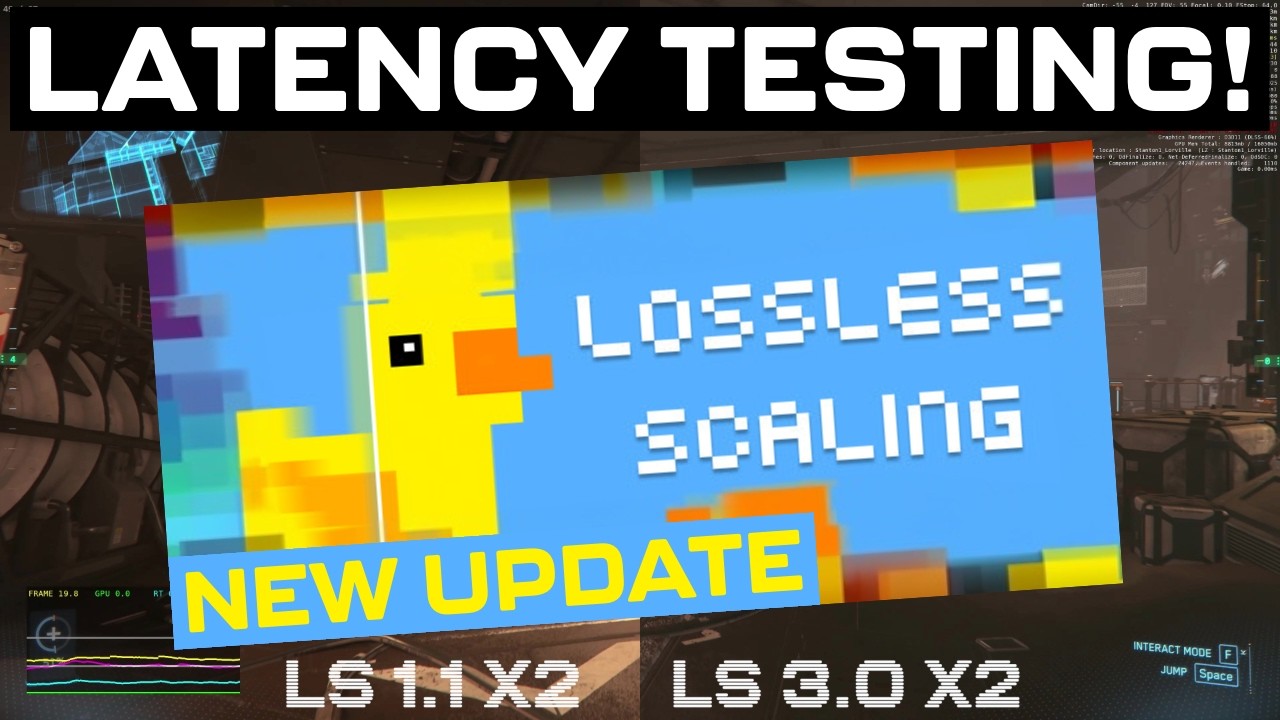The video discusses the recent updates to frame generation in Star Citizen, highlighting its ability to improve performance and visual smoothness, particularly for players starting with lower frame rates, while also noting the introduction of artifacts and potential latency issues. It concludes that the technology enhances the gaming experience for casual players, but competitive gamers may prefer to avoid it due to possible latency penalties.
The video revisits the topic of lossless scaling’s frame generation in Star Citizen, particularly focusing on the recent update to version 3.0 that promises improved performance and reduced latency. The presenter acknowledges that while frame generation might not solve all of Star Citizen’s performance issues, it has shown impressive results. The discussion highlights the mixed reactions from users, with some praising the technology while others express dissatisfaction, leading to refunds. The video aims to explore who benefits from this technology and how it performs under various conditions.
To illustrate the performance of frame generation, the video showcases footage slowed down to 25% speed, comparing the original frame rates to those enhanced by lossless scaling. The presenter notes that while the technology does create a smoother visual experience, it also introduces some artifacts, particularly noticeable at the edges of the screen. The video emphasizes that, despite these issues, the latest version of frame generation appears to deliver a better experience than its predecessors, especially when maintaining a base frame rate of 60 FPS.
The video further examines the performance when starting with lower frame rates, such as 30 FPS, and how frame generation can effectively double the frame rate. The presenter highlights the improvements across different generations of the technology, noting that the latest version offers options for generating more than one extra frame. This flexibility allows users to customize their experience, but it also raises questions about the visual artifacts that may arise at higher scaling levels.
Latency testing is a significant focus of the video, as the presenter uses specialized equipment to measure the impact of frame generation on responsiveness. The results indicate that while frame generation improves visual smoothness, it can also introduce a latency penalty that varies depending on the user’s hardware and gameplay style. The presenter suggests that players engaged in fast-paced, competitive gameplay may find the latency hit detrimental, while those playing more relaxed modes might appreciate the smoother visuals.
In conclusion, the video asserts that frame generation can enhance the gaming experience in Star Citizen, particularly for players who are less sensitive to latency. The technology offers a way to achieve smoother visuals, especially for those starting with lower frame rates. However, the presenter cautions that the benefits may not apply universally, as competitive players may prefer to avoid the potential latency drawbacks. Ultimately, the effectiveness of frame generation in Star Citizen will depend on individual preferences and gameplay styles.
